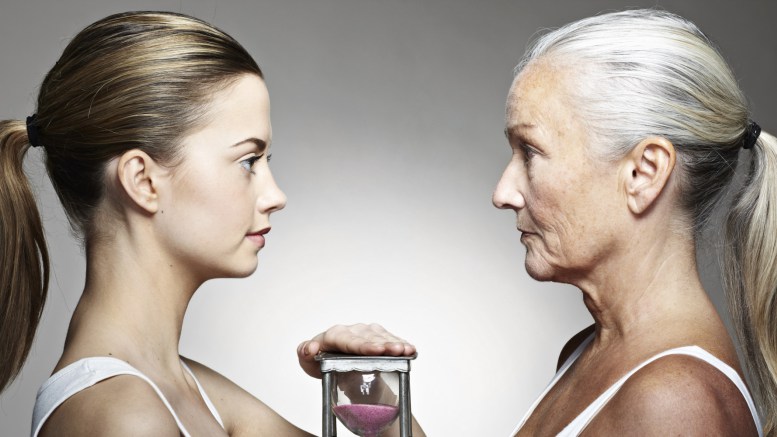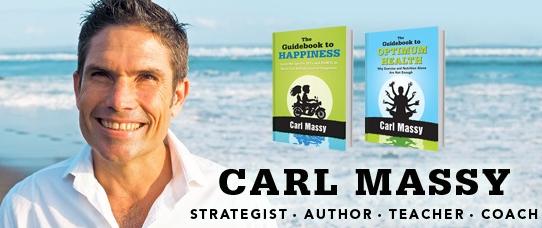‘If you want to be happy, set a goal that commands your thoughts, liberates your energy, and inspires your hopes.’ ~ Andrew Carnegie, Scottish-American industrialist and philanthropist
By Carl Massy: Here’s to big dreams and powerful thoughts!
This month’s Happiness Tips are all about CHANGE. Are you ready for an empowering change in your life?
Is it possible to really change at any age?
Scientists once believed we had a fixed number of cells in our brains. They also believed we were completely at the mercy of our genes (and DNA). It was thought your genes predetermined your personality and you were stuck with it for life. Scientists even used to believe that the earth was flat and the sun revolved around the planet. L-U-D-I-C-R-O-U-S!! (I just love the sound of that word).
Here is what we now know.
The field of Epigenetics
It is now understood the environment that impacts on a cell can change the expression of the genes. Which means that we can actually affect the DNA in our cells, by the lifestyle choices we make (plus the thinking and feeling we do). It is no longer considered a one-way street from our DNA. Here is another thing – according to Dr Joe Dispenza (author of Evolve Your Brain) only about 1.5% of our DNA is actually expressed. So we are definitely not at the mercy of our DNA. Can’t use that excuse any more.
The field of Neuroscience
The brain continues to produce cells throughout our entire lives. It is also highly adaptive to change, and hence the introduction of the word neuroplasticity. It effectively means that our brain can change. Also just like a muscle, the more the brain is used the more powerful it becomes. Alternatively, lack of use (not really challenging it) can lead to atrophy. Yowzers! So get into those mental push-ups and learning new stuff.
The field of Cellular Biology
Dr Bruce Lipton, a cellular biologist and author of The Biology of Belief, suggests that the external environment affects the cell. That external environment is not outside of the body, but inside the body. And includes the thoughts we think on a consistent basis.
So going back to that original question. ‘Is it possible to really change at any age?’ The answer is a resounding YES!!! I guess next you want to know how? Well it just so happens I have some ideas on that…
How do we change who and what we are, or what we do or don’t do?
Part 1: Switch: How To Change Things, When Change Is Hard, by Chip and Dan Heath
They have used a great analogy of a person riding an elephant. So their 3 Essential Components for change are:
1. Direct the rider
2. Motivate the elephant
3. Shape the path
Direct the rider
Essentially this means making it extremely clear what the final destination is, and if possible actually scripting out the moves to get there. Plus look at what already works and do more of that.
Motivate the elephant
The elephant represents that powerful part of us, which needs to be emotionally engaged to be the most effective. When our emotions are engaged, we or the change, becomes a powerful movement.
Shape the path
Make it as easy as possible to succeed by shaping the environment. Tweak it as most as possible, so the path is obvious, free of obstacles and fun to be on.
THE TAKEAWAY: For effective change to occur you need to engage all three of these components. If you aim at just one or two of these components, your change is likely to be less effective. Check out the Podcast HERE to listen to a more detailed overview.
How do we change who and what we are, or what we do or don’t do?
Part 2: The Carl Massy spin on personal change
I believe in similar principles that Chip & Dan Heath and many others have suggested when it comes to change, but now I want to outline exactly what is needed when it comes to personal change. Changing who we are, so we get different results in life. I essentially work on the following formula:
Thinking > Feeling > Behavior > RESULTS
If we want to change some of our results in life (pick me), then to be most effective we must change our thinking. Obviously this is easier said than done and actually a HUGE part of The Guidebook to Happiness – increasing awareness of our thinking. What we need to do more of and what we need to do less of.
So here is how to make personal change so you get new (and improved) results in your life:
1. Change your Thinking
2. Change your Emotions
3. Change your Environment
Looks simple enough (on this screen), but I am sure you, like me, know it is much easier said than done! So let me expand on them to help out.
Change your Thinking
Step 1 is to become aware of your predominant thoughts by engaging the prefrontal lobe of the neocortex (the upper and most developed party of the brain). This is powerful use of the mind and will cause your brain to evolve. Especially if you get selective about your thoughts – so you use positive language, create positive images in your mind and ask empowering questions. As many a sage has said before us, ‘it is our thinking that makes it so’.
Change your Emotions
This is another big subject. Essentially you need to link empowering emotions with your new thinking or thoughts or goal. It is our emotions that cause us to act. The greater the emotion we feel; the greater our desire to act. You can actually select and generate your preferred emotions if you practice. You can even generate emotions for something that has not happened yet. The more emotionally engaged you are, the more energy you have for change.
This is one area where we can also ‘lose’ a lot of energy. Engaging in long periods of negative emotion, like worry or anxiety, can drain us of the energy we need to achieve the more important stuff in life. Plus most of this emotional time is spent on PROBLEM-thinking, rather than SOLUTION-thinking.
Change your Environment
Make it a lot easier for you to succeed. Surround yourself with the people you want to emulate. Change your environment if it is not supportive of your change. If you want to start exercising, hang out with the exercising people. To eat healthy, eat where the healthy people eat. To become wealthier, hang out with the wealthy people. Do this in your home environment as well – set it up to support your change. Be strategic about this. Don’t just leave it to chance. Crafting your environment is a powerful tool for change.
THE TAKEAWAY: To make the most effective personal changes, you need to change your thinking, your dominant emotions and the environment you live in. Change all of those and you will become a new you.








